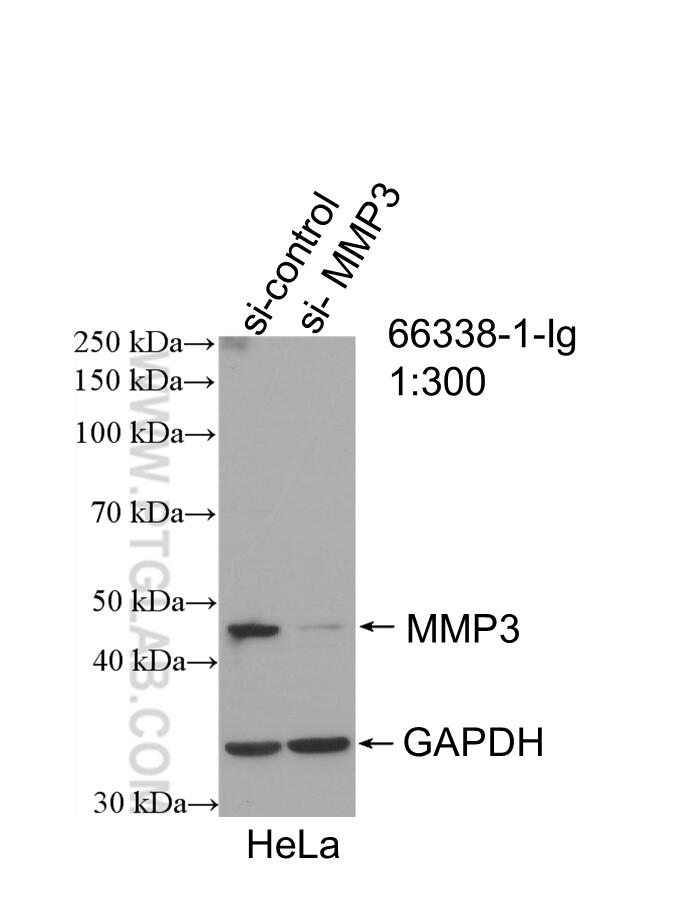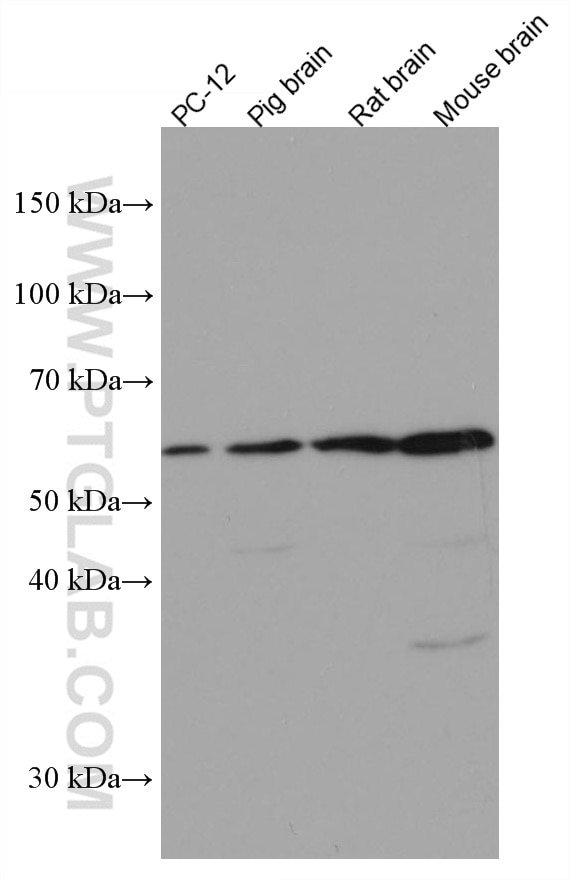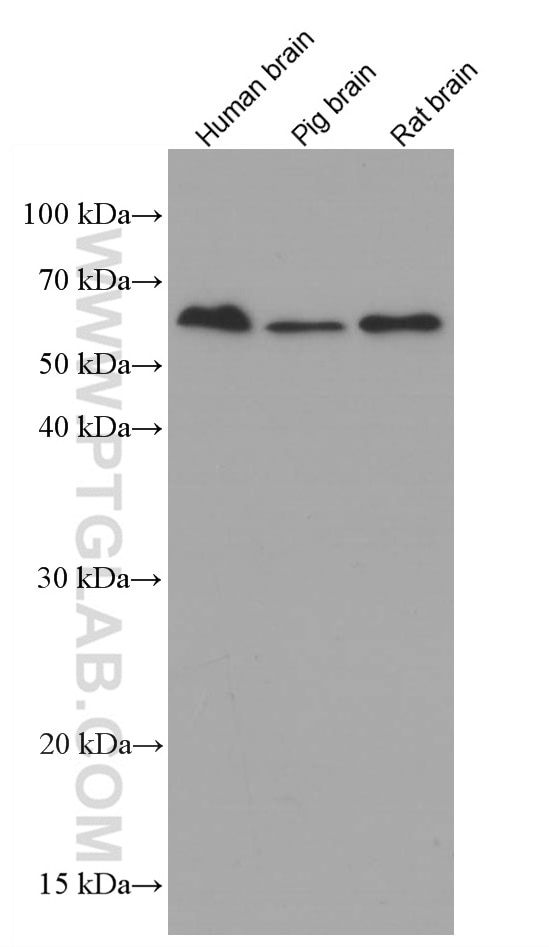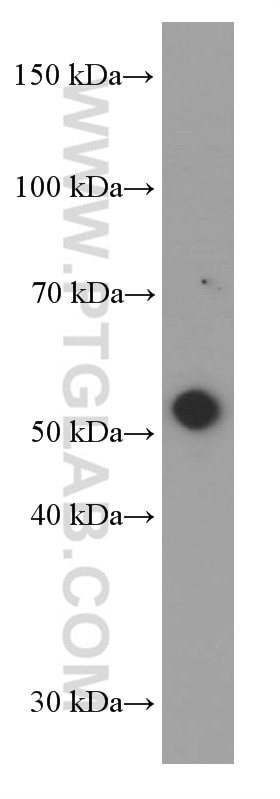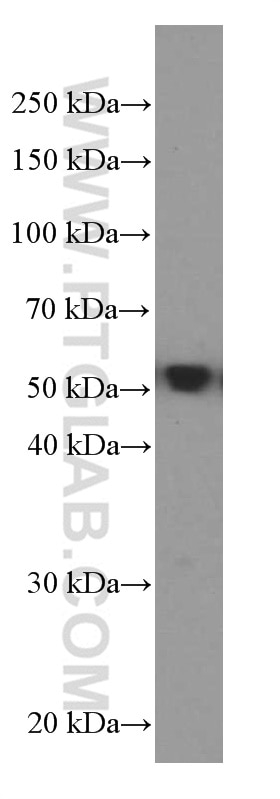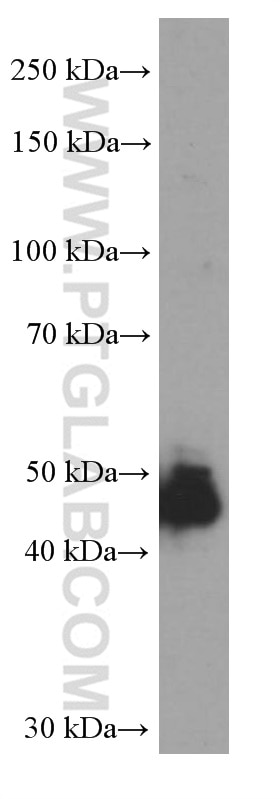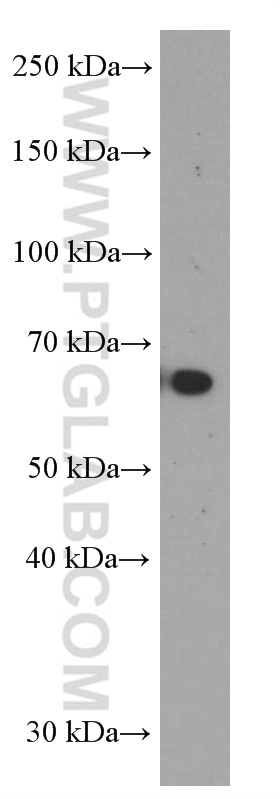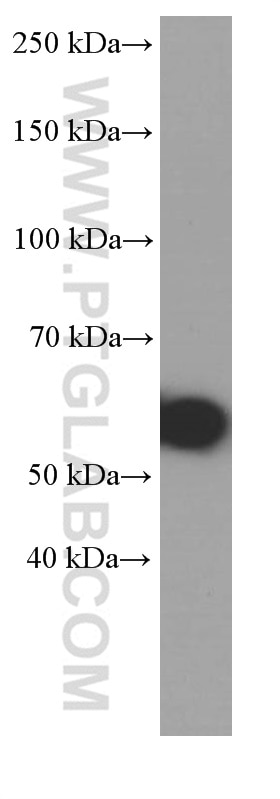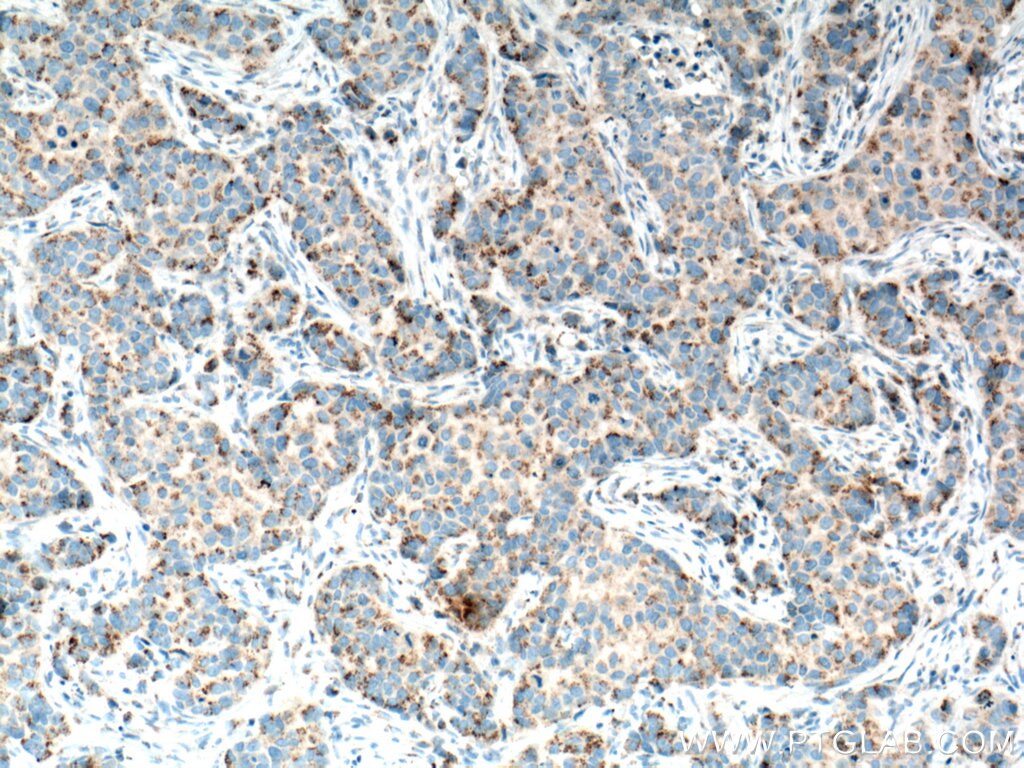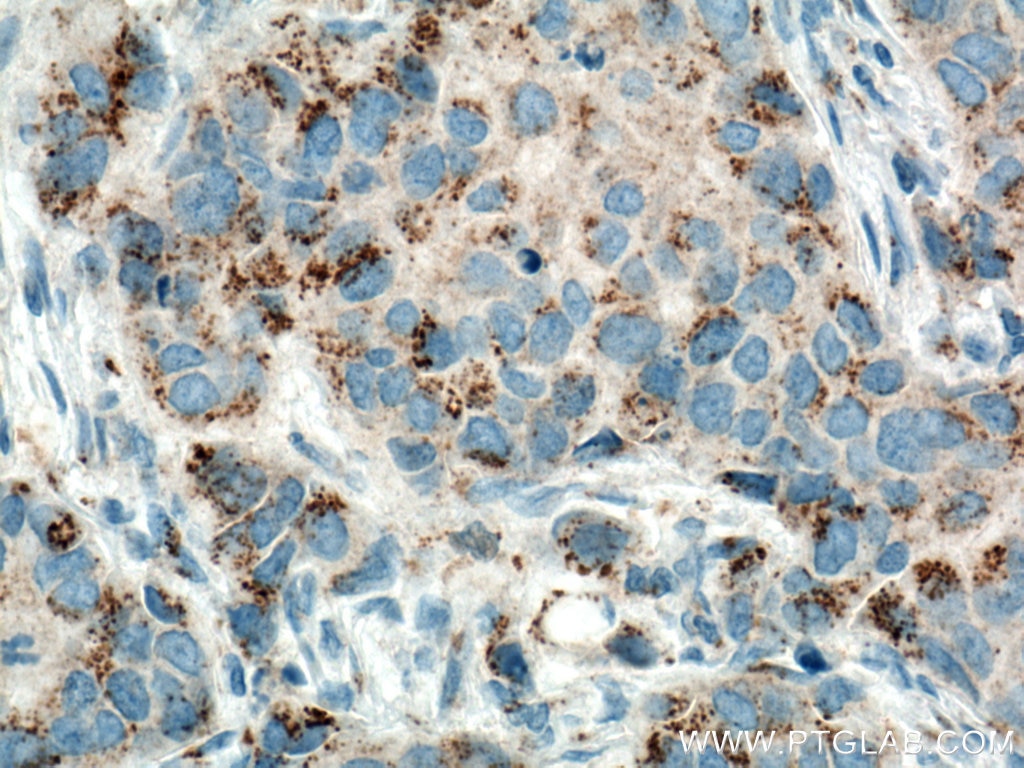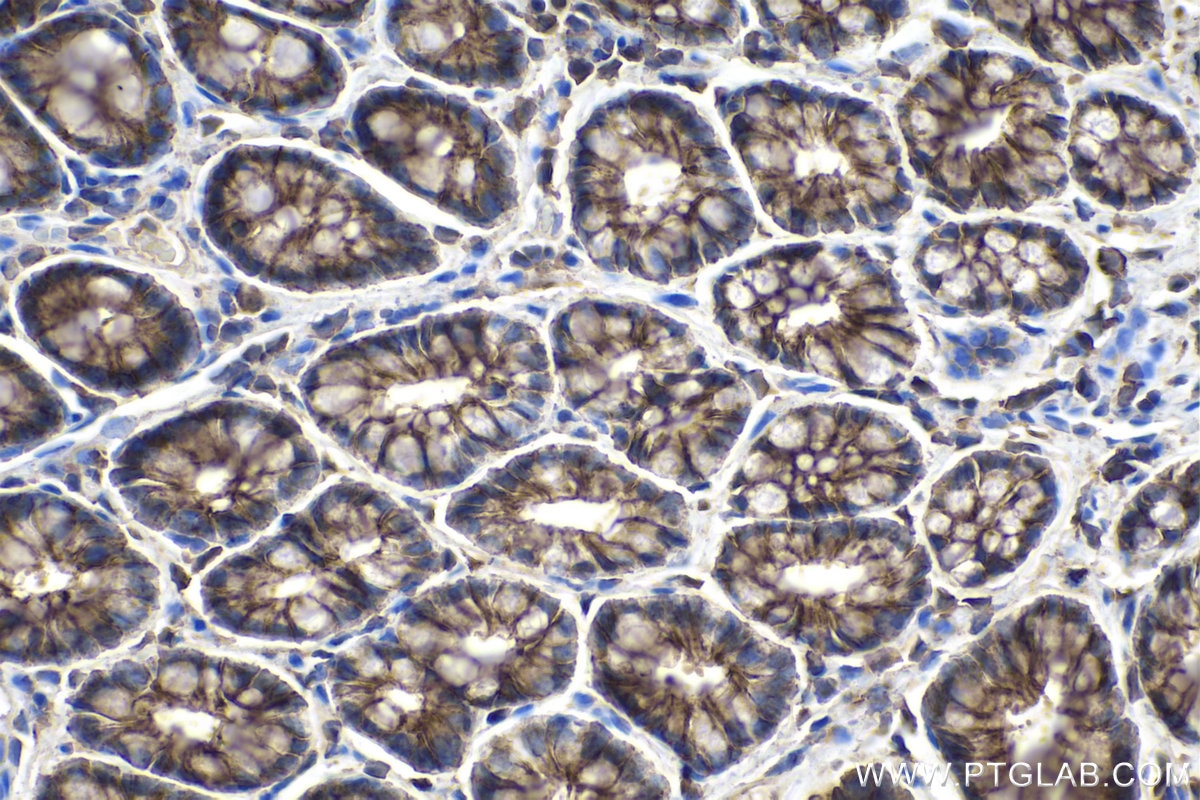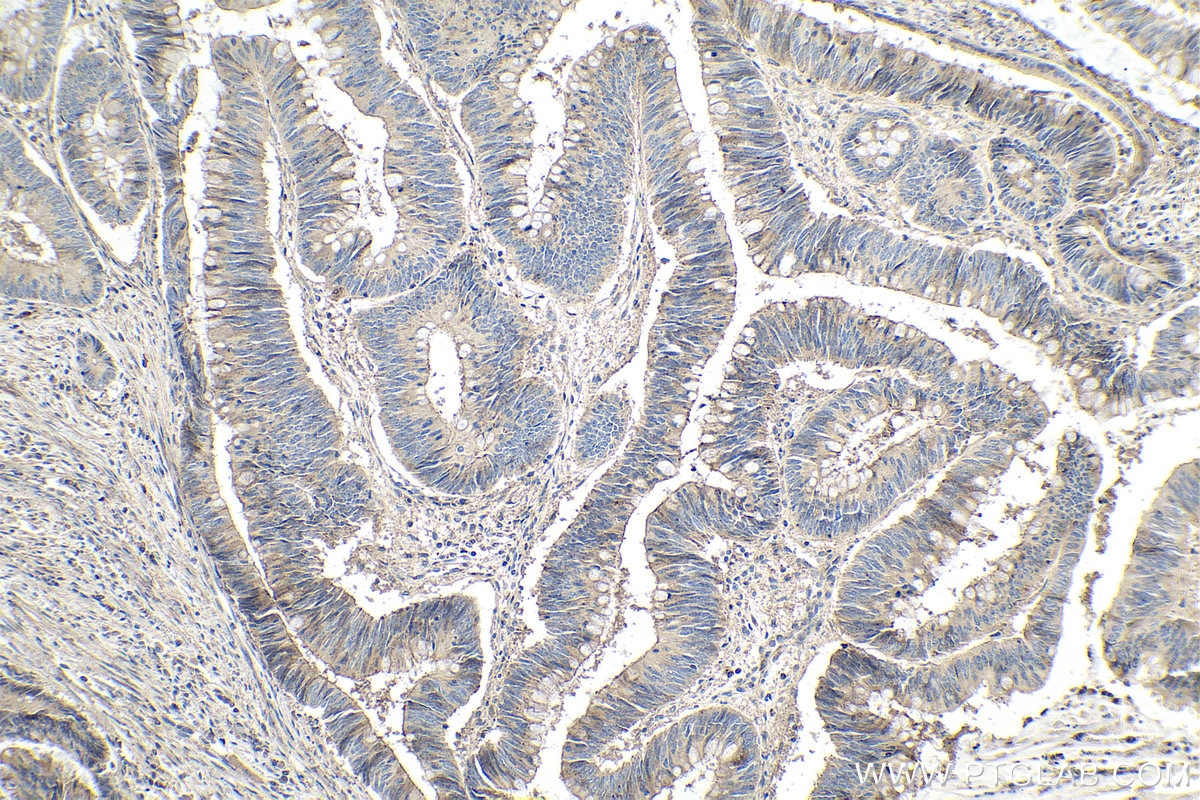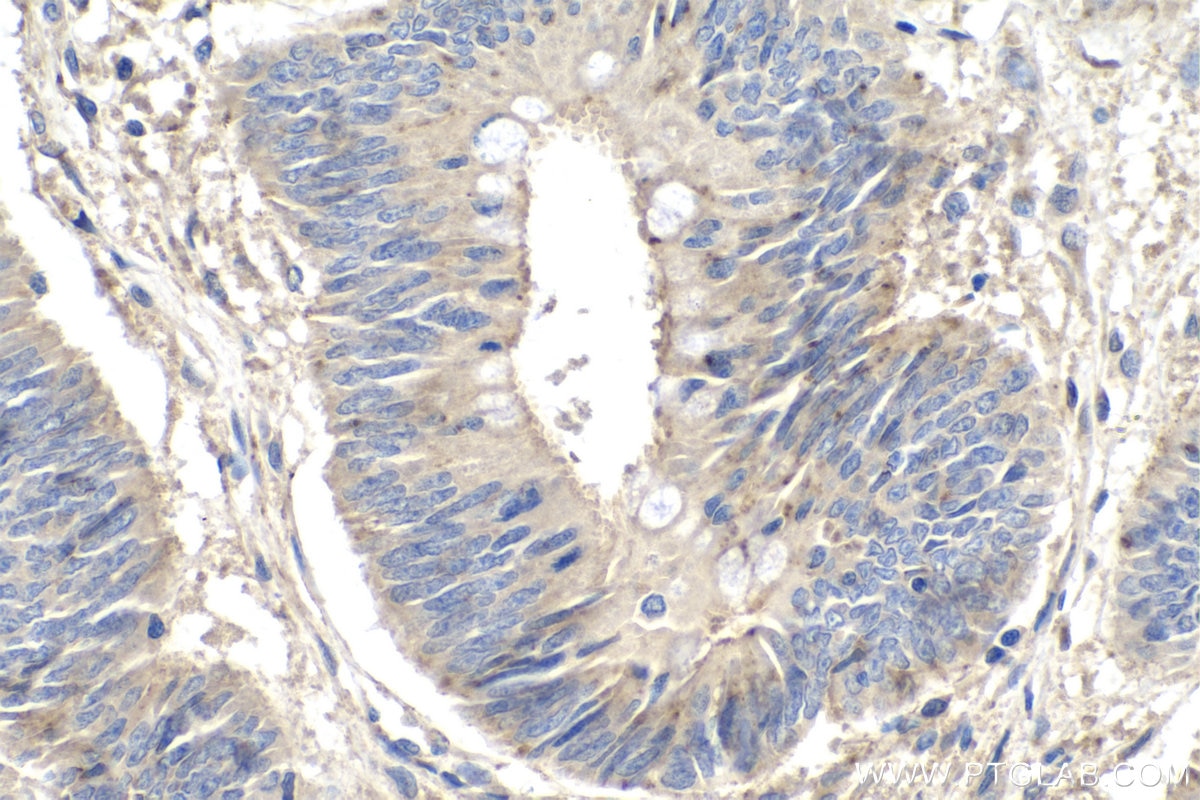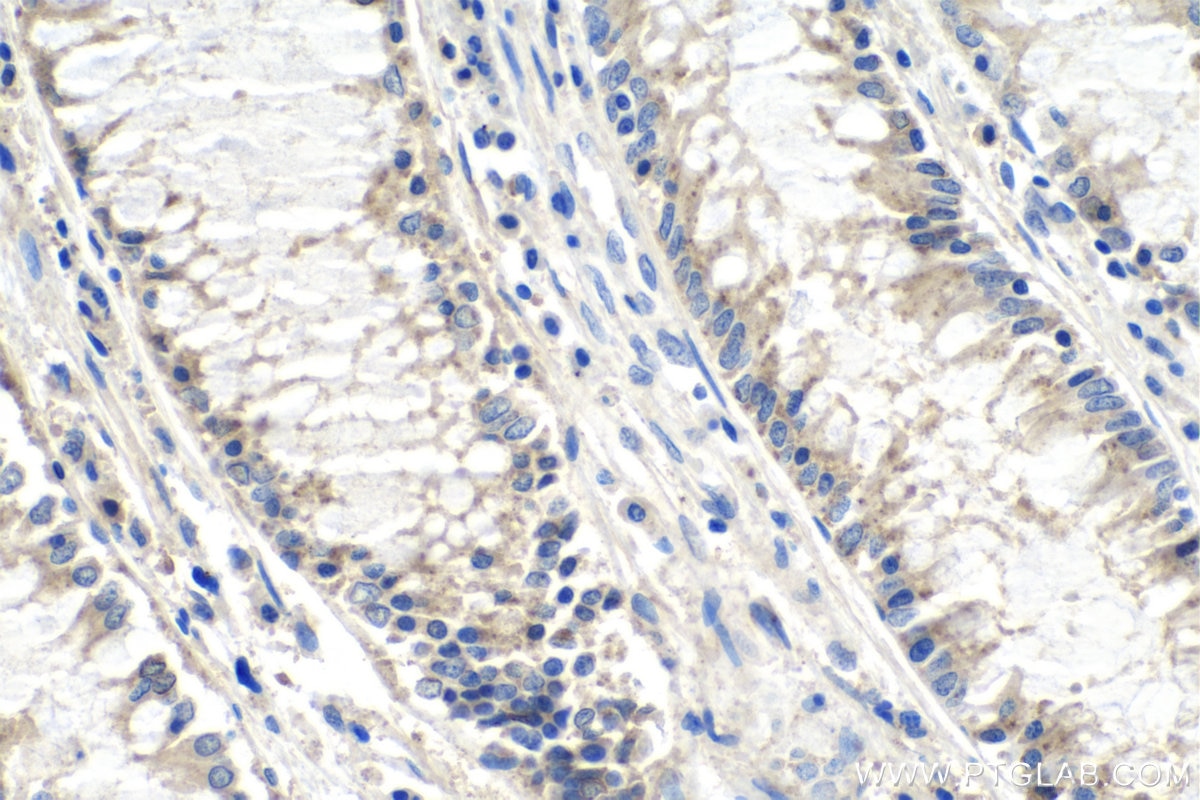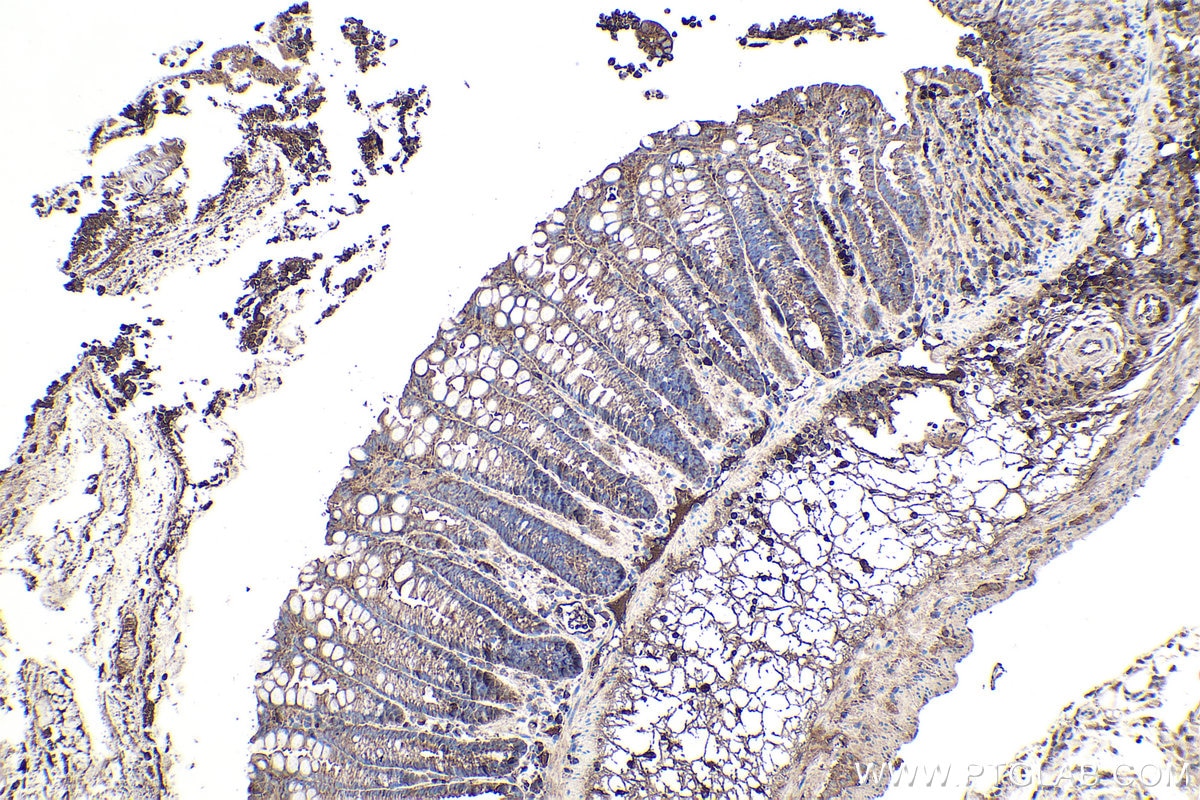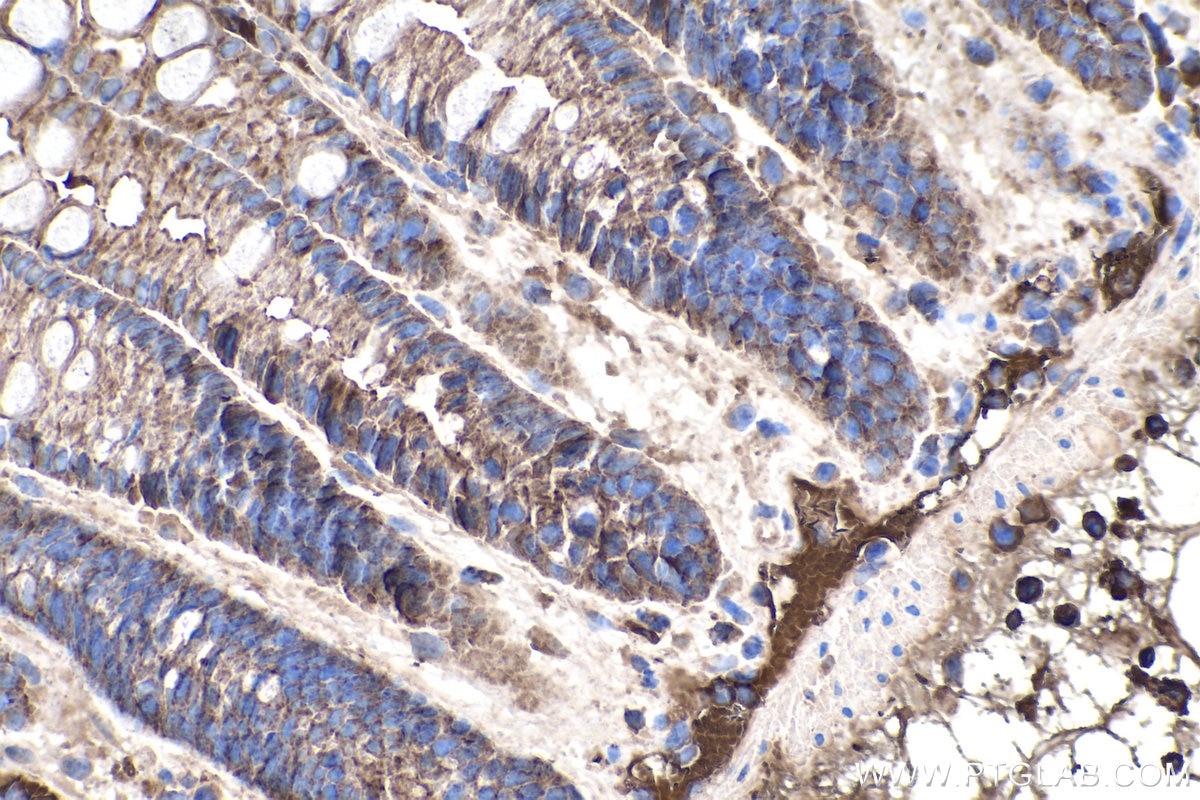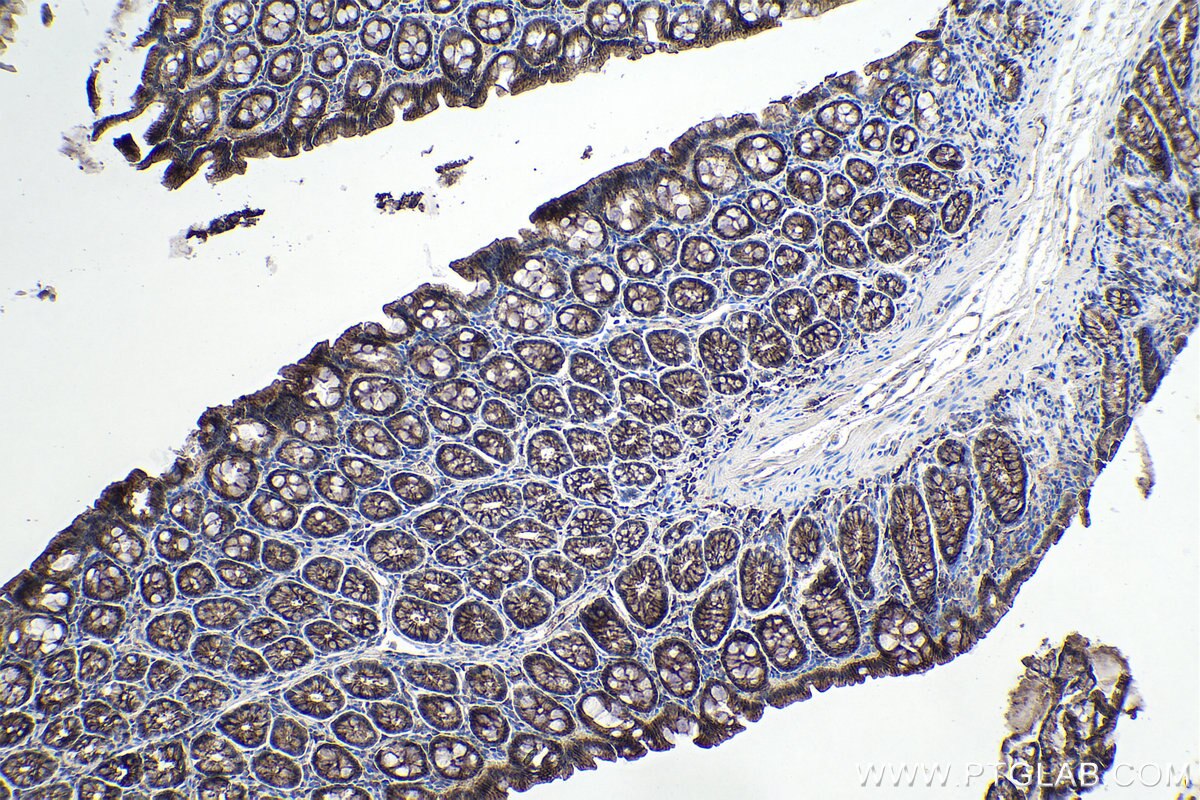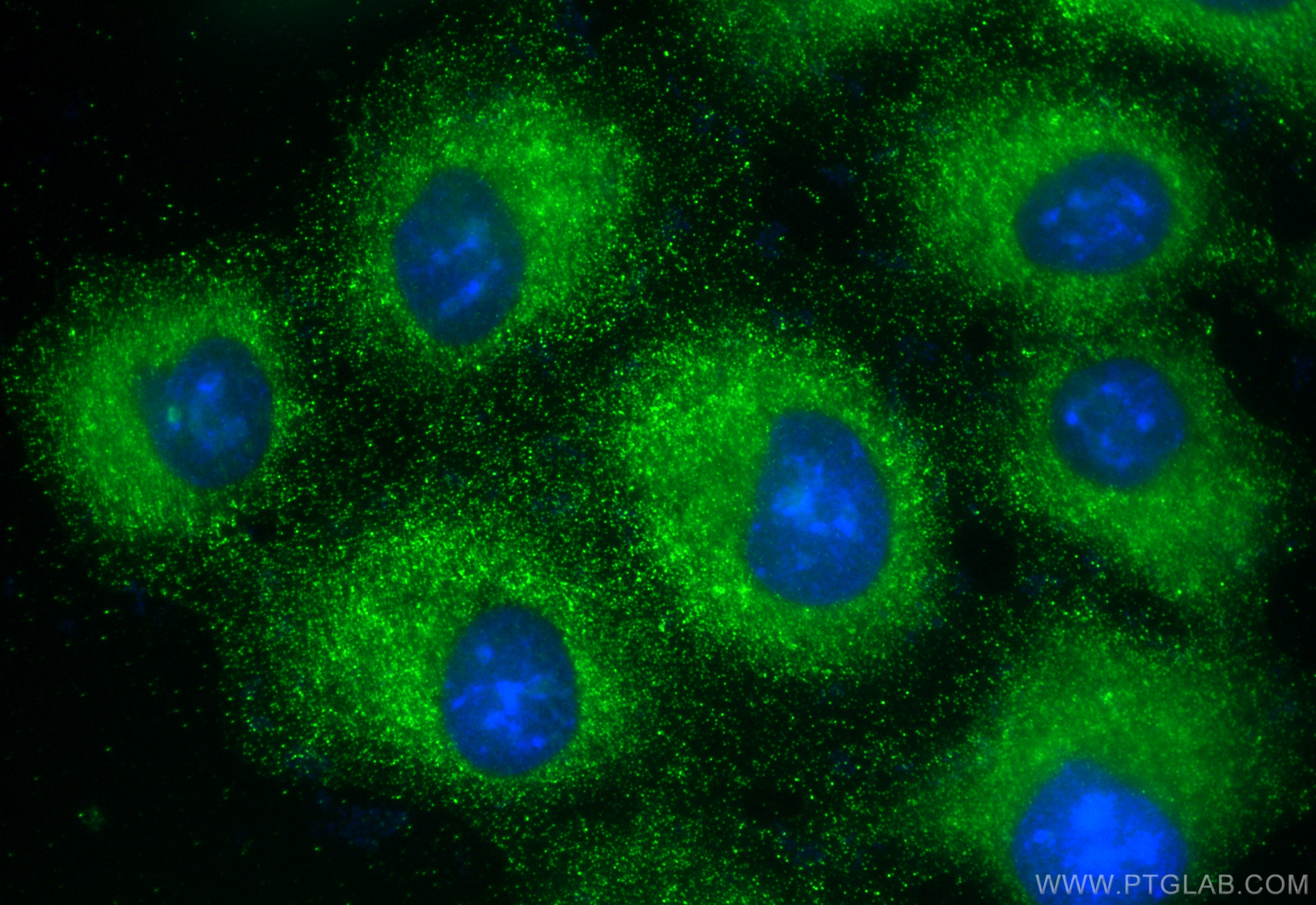Tested Applications
| Positive WB detected in | PC-12 cells, human heart tissue, HeLa cells, fetal human brain tissue, COLO 320 cells, Caco-2 cells, pig heart tissue, pig brain tissue, rat brain tissue, mouse brain tissue |
| Positive IHC detected in | human breast cancer tissue, human colon cancer tissue, mouse colon tissue, rat colon tissue Note: suggested antigen retrieval with TE buffer pH 9.0; (*) Alternatively, antigen retrieval may be performed with citrate buffer pH 6.0 |
| Positive IF/ICC detected in | A549 cells |
Recommended dilution
| Application | Dilution |
|---|---|
| Western Blot (WB) | WB : 1:5000-1:50000 |
| Immunohistochemistry (IHC) | IHC : 1:500-1:2000 |
| Immunofluorescence (IF)/ICC | IF/ICC : 1:200-1:800 |
| It is recommended that this reagent should be titrated in each testing system to obtain optimal results. | |
| Sample-dependent, Check data in validation data gallery. | |
Published Applications
| KD/KO | See 1 publications below |
| WB | See 46 publications below |
| IHC | See 11 publications below |
| IF | See 7 publications below |
Product Information
66338-1-Ig targets MMP3 in WB, IHC, IF/ICC, ELISA applications and shows reactivity with human, mouse, rat, pig samples.
| Tested Reactivity | human, mouse, rat, pig |
| Cited Reactivity | human, mouse, rat, pig, monkey |
| Host / Isotype | Mouse / IgG1 |
| Class | Monoclonal |
| Type | Antibody |
| Immunogen |
CatNo: Ag12359 Product name: Recombinant human MMP3 protein Source: e coli.-derived, PGEX-4T Tag: GST Domain: 26-477 aa of BC074869 Sequence: GEDTSMNLVQKYLENYYDLEKDVKQFVRRKDSGPVVKKIREMQKFLGLEVTGKLDSDTLEVMRKPRCGVPDVGHFRTFPGIPKWRKTHLTYRIVNYTPDLPKDAVDSAVEKALKVWEEVTPLTFSRLYEGEADIMISFAVREHGDFYPFDGPGNVLAHAYAPGPGINGDAHFDDDEQWTKDTTGTNLFLVAAHEIGHSLGLFHSANTEALMYPLYHSLTDLTRFRLSQDDINGIQSLYGPPPDSPETPLVPTEPVPPEPGTPANCDPALSFDAVSTLRGEILIFKDRHFWRKSLRKLEPELHLISSFWPSLPSGVDAAYEVTSKDLVFIFKGNQFWAIRGNEVRAGYPRGIHTLGFPPTVRKIDAAISDKEKNKTYFFVEDKYWRFDEKRNSMEPGFPKQIAEDFPGIDSKIDAVFEEFGFFYFFTGSSQLEFDPNAKKVTHTLKSNSWLNC Predict reactive species |
| Full Name | matrix metallopeptidase 3 (stromelysin 1, progelatinase) |
| Calculated Molecular Weight | 477 aa, 54 kDa |
| Observed Molecular Weight | 45-60 kDa |
| GenBank Accession Number | BC074869 |
| Gene Symbol | MMP3 |
| Gene ID (NCBI) | 4314 |
| RRID | AB_2881718 |
| Conjugate | Unconjugated |
| Form | Liquid |
| Purification Method | Protein G purification |
| UNIPROT ID | P08254 |
| Storage Buffer | PBS with 0.02% sodium azide and 50% glycerol, pH 7.3. |
| Storage Conditions | Store at -20°C. Stable for one year after shipment. Aliquoting is unnecessary for -20oC storage. 20ul sizes contain 0.1% BSA. |
Background Information
Matrix metalloproteinases (MMPs) play a critically important role in extracellular matrix remodeling and have been implicated in a number of key normal and pathologic processes.These proteases have come to represent important therapeutic and diagnostic targets for the treatment and detection of human cancers. MMP-3 activate procollagenase via two pathways: slow direct activation and rapid activation in conjunction with tissue or plasma proteinases. The pro-MMP3 (60 kDa) and the active MMP3 (47 kDa) can be detected through western blot.
Protocols
| Product Specific Protocols | |
|---|---|
| IF protocol for MMP3 antibody 66338-1-Ig | Download protocol |
| IHC protocol for MMP3 antibody 66338-1-Ig | Download protocol |
| WB protocol for MMP3 antibody 66338-1-Ig | Download protocol |
| Standard Protocols | |
|---|---|
| Click here to view our Standard Protocols |
Publications
| Species | Application | Title |
|---|---|---|
Adv Sci (Weinh) Inflammatory Fibroblast-Like Synoviocyte-Derived Exosomes Aggravate Osteoarthritis via Enhancing Macrophage Glycolysis | ||
Biomaterials Macromechanics and polycaprolactone fiber organization drive macrophage polarization and regulate inflammatory activation of tendon in vitro and in vivo. | ||
J Nanobiotechnology Low-dose celecoxib-loaded PCL fibers reverse intervertebral disc degeneration by up-regulating CHSY3 expression | ||
Acta Pharmacol Sin Methylene blue prevents osteoarthritis progression and relieves pain in rats via upregulation of Nrf2/PRDX1. | ||
Aging (Albany NY) ASIC1 and ASIC3 mediate cellular senescence of human nucleus pulposus mesenchymal stem cells during intervertebral disc degeneration. | ||

